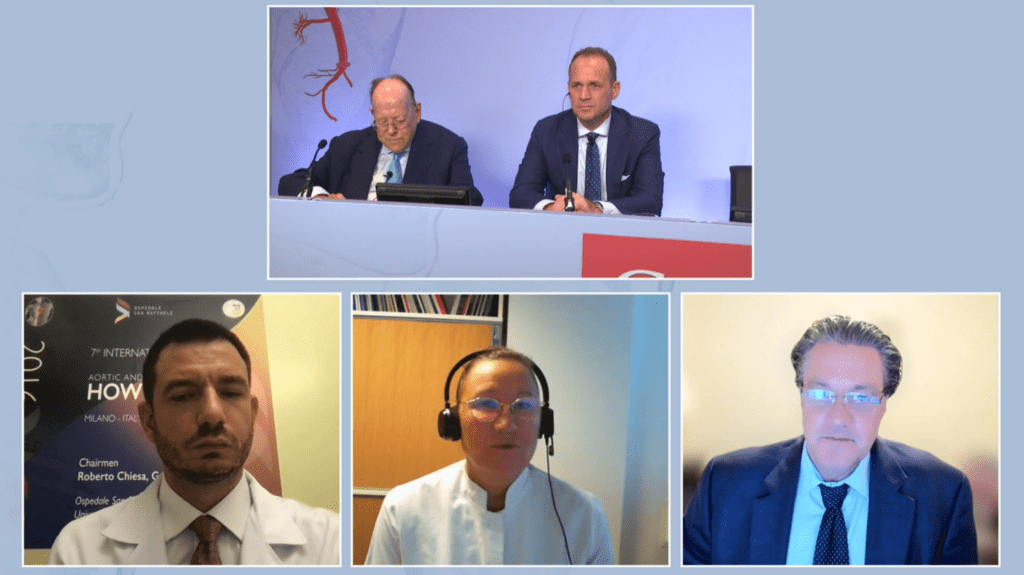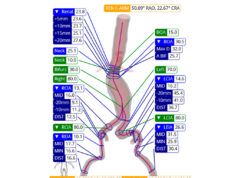
Presentations and discussions at the CX Aortic Vienna 2022 Digital Edition (24–26 October) highlighted the fact that population screening for abdominal aortic aneurysm (AAA) is not reaching certain patient groups that might benefit from it, including women and racial and ethnic minorities.
In the Abdominal Aortic session, Maarit Venermo (Helsinki, Finland) delivered a presentation on the impact of a national screening programme on the selective AAA repair rate and ruptured AAA incidence in Finland and Sweden. The data she presented were from the Nordic AAA study, which includes information from Denmark, Finland, Norway and Sweden collected over a 10-year period (1998–2008) and represents a combined population of over 25 million. Out of the four Nordic countries included in the study, Venermo specified that national AAA screening exists only in Sweden, and was introduced from 2006–2015.
Venermo reported that the incidence of ruptured AAA decreased in both Finland and Sweden, with the decrease more pronounced in Sweden. The presenter added that screening increased elective repair among 65–80-year-old men, and that among men over the age of 80 years, there was a significant increase in intact aneurysm repair. Finally, Venermo revealed a shift from open repair to endovascular aneurysm repair (EVAR) in the study time period.
In subsequent discussion, Venermo highlighted the importance of differentiating between men and women within screening programmes, especially when considering the threshold for intervention. “We see rupture in women with aneurysms of lower diameter than 5cm, and indeed it has been shown in several studies that they rupture at small diameters,” she informed the audience.
Following Venermo’s talk, Marc Schermerhorn (Boston, United States) spoke on the impact of sex and racial and ethnic factors on AAA management and outcome. He concluded that disparities by sex, race, and ethnicity “exist at all steps along AAA care,” including AAA detection, clinical trial enrolment and outcomes, among others. Disparities early in the care trajectory likely influence disparities observed later on, he added.
Closing his presentation, Schermerhorn outlined some key targets for improvement in this area, including timely AAA screening for those who are eligible, standardisation of reporting practices and minimum thresholds for minority and female participation in AAA clinical trials, and improved preoperative counselling and outreach after EVAR for populations at high risk for inferior outcomes.
“Population screening is not reaching certain groups,” said anchor Roger Greenhalgh (London, UK), summarising the key message from this part of the session.
Elsewhere in the Abdominal Aortic session, expert speakers engaged in a debate on whether the key risk of adverse event after standard EVAR relates to original aortic aneurysm diameter. Mauro Gargiulo (Bologna, Italy) argued for the motion, noting that aneurysm diameter “is independently associated with long-term mortality after EVAR” in his clinical experience.
Gargiulo stated that, in the literature, AAA diameter has an important clinical effect on EVAR outcomes because it is associated with perioperative results, mid-term interventions, and long-term mortality after EVAR. “The diameter of the aneurysm is one of the anatomical variables that must be taken into consideration in the choice of treatment—either open or endovascular—of an AAA,” he concluded.
Presenting a case against the motion, Hence Verhagen (Rotterdam, The Netherlands) outlined what he claimed to be the first study focusing on the impact of free luminal space on outcomes after EVAR. “Patients with larger AAA flow lumen are at greater risk for AAA-related complications irrespective of total AAA diameter,” he added, concluding that “the key risk of adverse event after standard EVAR does not relate to original aortic aneurysm diameter”.
Enrico Rinaldi (Milan, Italy) also presented in the Abdominal Aortic session, demonstrating in an edited case the open surgical conversion after EVAR in a patient with a suspected spondylodiscitis. He noted that spondylodiscitis after EVAR is rare and that the clinical manifestations are variable and sometimes unclear. “Close interdisciplinary co-operation pre-, inter- and postoperatively is “obligatory” in this highly specific patient population, he informed the audience.













